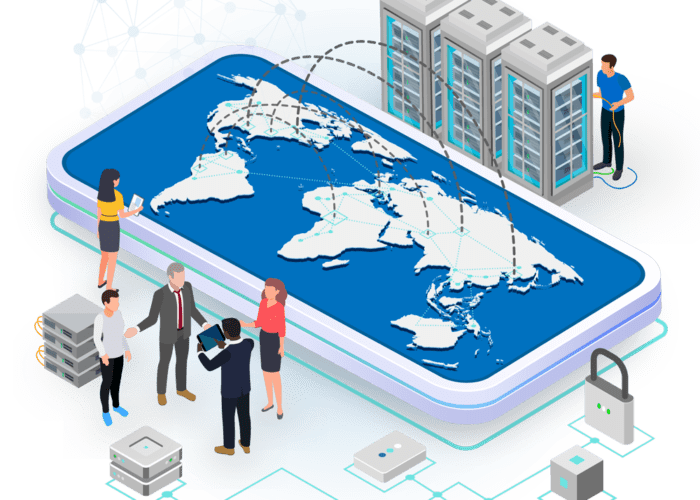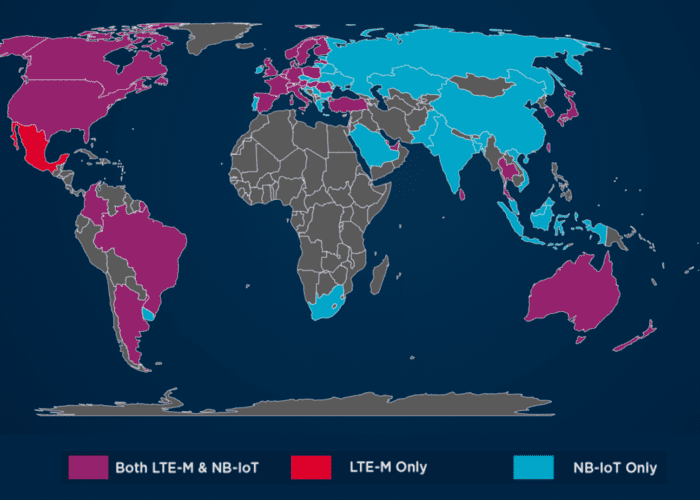If the industry you’re building solutions for doesn’t need ultra low-latency and very high-speed data transmission, or a massive amount of low-power, long-life devices, then the answer is probably not. However, here are some things to consider so you’ll be ready as 5G slowly rolls out and becomes the new standard.
What is 5G?
5G is the next generation of cellular technology that will cause a tenfold increase in data rate transmission and reduce latency to a few milliseconds end-to-end. One reason 5G is a highly anticipated technology is that it won’t be a standalone network like 2G or 3G. Instead, 5G will be an entirely new wireless landscape that will:
- Enhance underlying networks to achieve near real-time data transmission using wider frequency bands
- Enable the networks to support billions of devices
- Harmonize different networks (including LTE-M and NB-IoT)
When Will 5G Be Available for IoT?
5G deployment requires building a new network infrastructure, which is a costly and time-consuming process. 5G is being rolled out in phases, and there will likely be delays. For these reasons, the timeline for adopting 5G will vary depending on the needs of your customers.
Where you’re planning to deploy your solution will also be a major factor that determines when you will have access to 5G for IoT. Densely populated urban areas will be the first to get 5G deployment, whereas rural areas might not ever see 5G in full force. While no timeline is set in stone, here’s a general idea of when to expect the phases to roll out.
Phase |
Approximate Year |
Features & Use Cases |
| Phase 1 | Started Mid-2010s | High-speed, fixed-location, localized coverage, primarily outdoors |
| Phase 2 | 2019 | First-generation consumer 5G mobile phone markets in sub-3GHz bands, with LTE-M deployed for IoT applications |
| Phase 3 | 2021+ | Mobile broadband use cases; far more devices being supported at high speeds and capacity |
| Phase 4 | 2023+ | Low-power, low-cost applications that need high coverage and density (5G LPWA/Massive IoT); such as city power grid monitoring |
| Phase 5 | 2025+ | Low-latency, high-reliability applications; such as support for some of the data needs of self-driving cars, including rapid downloads of ultra-high definition maps |
Which Use Cases Will Require 5G?
The hype around 5G revolves around its ability to enable three main categories of use cases beyond the capabilities of 4G:
- Ultra-reliable, low-latency communications
- Massive IoT
- Enhanced mobile broadband
For example, a few of the major use cases that will require 5G include:
- Remote Surgery: In particular, remote surgery that relies on AR/VR requires 5G’s low latency for real-time communication between medical teams and the remote-controlled devices performing operations.
- Autonomous Vehicles: 5G’s higher throughput and lower latency will support some of the needs of self-driving cars with rapid downloads of data, such as ultra high definition maps and construction zone information.
- Renewable Energy in Smart Cities: 5G will help energy grids powered by renewable energy sources operate more efficiently by providing real-time monitoring and forecasting.
Will 5G Make a Difference for My Customers?
While it’s easy to get excited about the potential benefits of 5G and passing those benefits on to your customers, it’s important to ask yourself if your customers will really need 5G at all.
If your customers aren’t using IoT in a capacity where they need high-speed wireless data transmissions in as close to real time as possible, they won’t likely see a benefit from the increased throughput and lower latency of 5G.
Are You Sure I Don’t Need 5G?
Chances are, if your customers do need 5G, you already know it and are accounting for it, as there are design and budget considerations you have to make. For example, 5G radio modules will be more expensive at the outset. According to McKinsey & Company, at launch, “5G IoT modules will cost two to three times as much as 4G modules, but prices will steadily decline.”
There are hardware and data processing implications, too—if you’re preparing for 5G, you need to think about how you’ll use and store that influx of data.
What If I Still Need to Support Low-Latency, High-Speed Use Cases?
If you need to support low-latency, high-speed use cases, the truth is that 4G—particularly with higher LTE category radio modules—is already pretty fast and is extremely well-equipped to handle sending and receiving a substantial amount of information at high volumes from an IoT network.
Even when 5G does fully roll out, your application won’t necessarily need the lower lag time that a change from 4G to 5G will give. While 5G will reduce latency from 4G’s typical 50 milliseconds to one millisecond to the tower, 4G’s 50 millisecond delay is suitable for most IoT applications. For instance, having the lowest possible lag time is a priority in remote surgery, where an end-to-end one second of delay can be the difference between life and death, but it likely won’t make a difference for something like a cargo tracking solution. You might decide to stick with 4G until it is sunset.
When will 4G Sunset?
Sunsetting of cellular technologies is a gradual process, and 4G won’t sunset until well after 5G is fully rolled out. By the time 4G does sunset, you’ll have to replace the devices you have running on it, too, due to their age.
What If I Need To Deploy Battery-Powered Units at Large Scale?
If you need to deploy battery-powered units at large scale, you can turn to the current generation of LPWA technologies, in particular, LTE-M or NB-IoT. Both LTE-M and NB-IoT are part of the 5G standard (they won’t disappear once 4G is gone) and are currently being implemented.
The network technology you go with primarily depends on geographic availability. LTE-M and NB-IoT will most likely give you the data transmission speed that you need for most IoT applications. For example, a solution that monitors pressure on gas tanks will probably never need faster data transmission than what LTE-M and NB-IoT provide. For that type of use case, adopting 5G once it becomes available for IoT will probably not even be necessary because you’ll already be on a network that supports it.
Navigating the 5G Landscape: Next Steps
The right IoT connectivity provider can help you navigate questions about planning for 5G. In many cases, 4G, LTE-M, and NB-IoT will be sufficient for most IoT applications and keep your products competitive well into the 2020s.
If you’re not already using 4G, LTE-M, or NB-IoT, Aeris can help you get started. We provide custom solutions, smart advice, and hands-on support to help solution providers across various industries achieve cutting-edge results. Contact us today.


